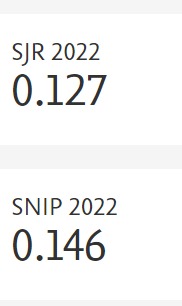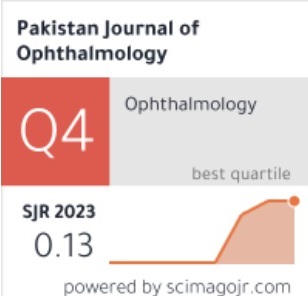Colour Blindness amongst the Young Age Group in a Tertiary Care Eye Hospital for pre-employment health screening
http://doi.org/10.36351/pjo.v37i2.1180
DOI:
https://doi.org/10.36351/pjo.v37i2.1180Keywords:
Colour blindness, Ishihara plates, X-linked, Red green deficiency.Abstract
Purpose: To determine the frequency of color vision deficiency among young age groups visiting a tertiary care eye hospital for pre-employment health screening.
Study Design: Descriptive, cross sectional study.
Place and Duration: Armed Forces Institute of Ophthalmology, Rawalpindi, from June 2018 to December 2019.
Methods: Data was collected using non-probability consecutive sampling technique. All candidates who appeared for medical fitness for pre-employment screening were included. Candidates belonged to various regions of Pakistan. Informed consent was taken. Complete history and ophthalmic examination including visual acuity, best corrected visual acuity, anterior segment examination and dilated posterior segment examination was performed. Intra ocular pressure was measured by Goldmann Applanation Tonometer. Colour vision was checked before pupillary dilation using Ishihara test plates. Candidates were clearly instructed about test plates. Candidates with ocular abnormality were referred to the specialized units. The data analysis was done by IBM SPSS 20 software.
Results: One thousand and five hundred (1500) candidates were screened. Out of these, 88.3% (1325) were males and 11.6% (175) were females. Mean age of the candidates was 20.35 ± 4.46 years. Approximately five percent (4.8%, n = 73/1500) candidates had color vision deficiency. Out of these, 94.52% (69) candidates were unaware of their condition.
Conclusions: Color blindness in this study was 4.86%. Majority of the color blind persons were males and most of them were unaware of their condition.
Key Words: Colour blindness, Ishihara plates, X-linked, Red green deficiency.






